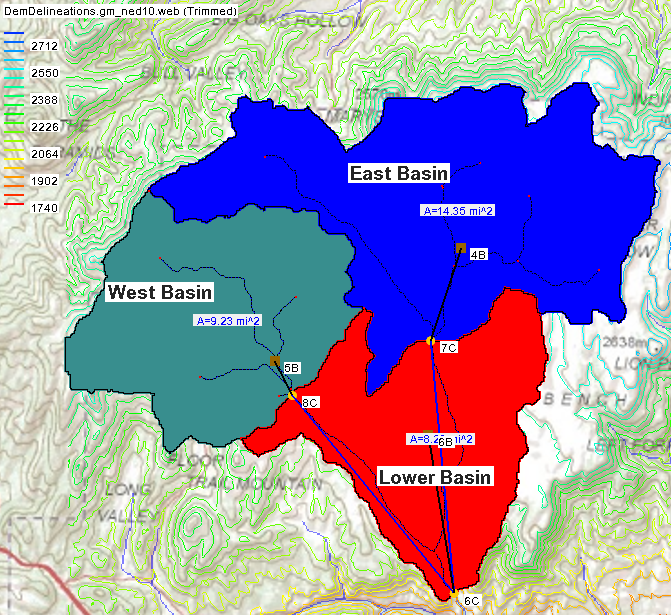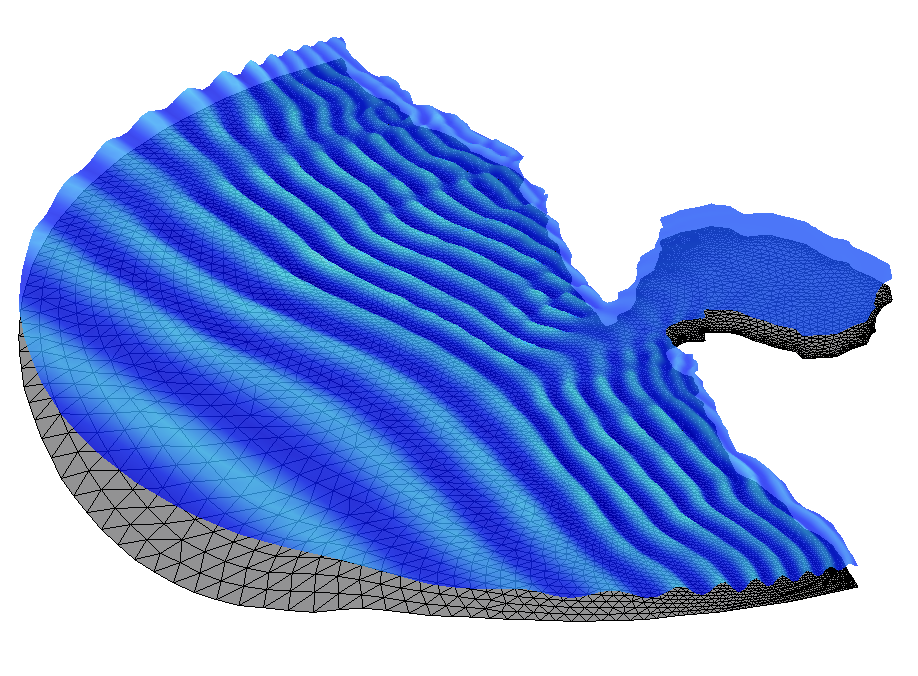Exploring the Drawing Tools in WMS
By aquaveo on January 10, 2023When presenting a model in the Watershed Modeling System (WMS), you may need to clearly label locations or structures in your watershed model. For example, you may need a graphic with the names of your watershed branches clearly labeled. The Drawing Tools WMS provides a way to clearly annotate your watershed model. This blog post will cover some of the options and uses for these Drawing Tools.

The Drawing Tools contain options to draw objects including lines, rectangles, ovals, and text. When using the object creation tools, WMS provides attributes for changing the drawn object. Using the Select Drawing Object tool, you can double-click on a drawn object to pull-up the attribute options for the object. This includes options to change the line width, color, fill, arrows, and fonts.
It's important to note that drawing objects are layered. The first object you create will be below the next object you create. If you need to change how the objects are layered, the Drawing Tools contain tools for moving the objects forward or backward. To do this, select the object, then use the Move to Back, Move to Front, Shuffle Up, or Shuffle Down options to move the object.
You have the option to set a depth for the objects when creating new drawing objects. This depth is based on the project projection. Using the Drawing Depths command in the Drawing Objects menu, you can set a depth for the object you create. This can help make certain the drawing objects are above the grid, feature objects, or other items in the project.
It is important to note that the drawing objects are attached to the project projections. This means that drawing objects will stay fixed to the location of the model coordinates, not the Graphic Window position. This allows you to pan or zoom around your model and the drawing objects will stay fixed to the model location.
The drawing tools will be included when saving an image of the Main Graphics Window. This allows saving an image with annotations for use in presentation materials. To do this, use the Save As command and select the JPEG Image option for the file output.
The Drawing Tools are one of the options provided by WMS to let you make clear presentations for your watershed models. Try out the Drawing Tools in WMS today!







